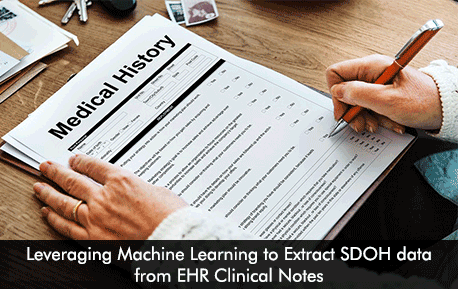Machine learning (ML) has revolutionized healthcare. Machine learning technology facilitates healthcare providers to analyze numerous different data points and propose outcomes. According to a study published by JAMIA, machine learning can be used to extract social determinants of health (SDOH) data from EHR software clinical notes. This extraction of data can help in the development of clinical decision support systems.
The Importance of SDOH Data
Social determinants of health data can make a big impact on health outcome levels. Healthcare providers who want to deliver optimum care quality need to consider other factors that have a direct impact on the patients’ health. These elements comprise income, an individual’s access to care, and dietary consumption which make up social determinants of health. SDOH provides insights related to non-clinical factors that have an influence on a patient’s wellbeing. It’s a difficult process to extract SDOH data as the information is not easily accessible, particularly when the provider is working on treatment plans. SDOH data is in Electronic Health Records (EHR) software systems but are unstructured text within clinical notes, patient data, and patient portal EMR software messages.
It is estimated that 80% of clinical data is stored in an unstructured format which makes it difficult to access and use. Hence, clinicians might be unacquainted with the SDOH data that can impact providers’ decision-making and can have a negative impact on patient health outcome levels.
How can Machine Learning help to make SDOH data accessible?
Machine learning and natural language processing can be used to open SDOH data from EHR software systems. This provides a complete picture of each patient’s healthcare conditions. A query can be promptly created by the user to extract main conceptions from unstructured patient data. This helps to detect issues that impact patient health and outcome.
This data can then be made use of analytic tools such as machine learning algorithms. When the SDOH data is identified and made accessible providers can easily introduce new patient care plans and make any other changes that can have a positive impact on patient outcome levels and facilitate high-quality care.
The Final Results
With the help of machine learning technology healthcare providers can identify patients that are at risk of poor outcome levels due to social determinants of health problems. With this meaningful information at hand, providers can take quick measures to link patients with valuable resources. These might include financial aid for important medication, chronic disease management through educational resources, and improving access to screenings. Taking proactive steps using SDOH data can greatly improve patient care and doctors can feel confident about their care plans and patient diagnosis.







